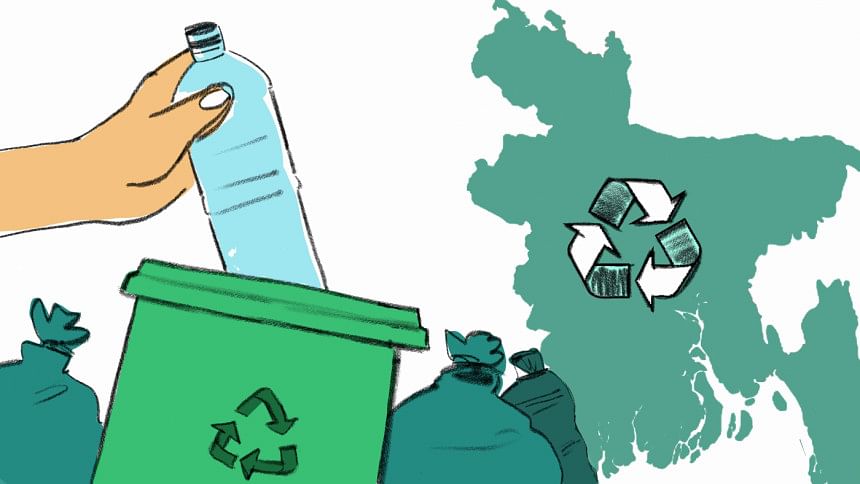Waste&Recycle
How can Bangladesh improve its waste management?
Sufia is a middle-aged woman working for ZeroWaste Tech, a startup in Dhaka. Every morning, she wears her safety jacket, gloves, boots, and helmet with the powered air-purifying respirator.
Arthur Rahman
Publisher
August 3, 2025
28
0

After checking her smartphone in her allocated region, where the garbage is full and needs to be managed, she goes out with her other mates, collects garbage, and puts it in their targeted dump site near the city. The dump site has also classified areas such as plastics, biowaste, glass, e-waste, etc. Her team then divides the waste accordingly and puts them in each place. Then, the waste is processed further to minimise carbon emissions and can be converted into renewable energy. Bangladesh has been facing severe problems in waste management for decades. Several initiatives have been taken, but they have not been effective due to their irregular implementation. The above-mentioned scenario can be made real especially in Dhaka, the most overpopulated city in Bangladesh, where garbage and waste can be seen everywhere, from main roads to narrow alleyways. In the rainy season, the problem intensifies tremendously because of poor drainage systems. Electronic gadget usage is rising around the world, and Bangladesh is no different. This rising usage leaves a vast amount of electronic waste, which should be appropriately discarded. At the same time, most of it should be recycled and used for new purposes. The challenges in recycling e-waste in Bangladesh include the lack of formal collection systems, insufficient recycling infrastructure, and limited public awareness about the environmental impact of improper e-waste disposal. Informal recycling practices often involve hazardous processes that frequently exacerbate the process and harm both the environment and workers.
Comments (0)
Please sign in to leave a comment
No comments yet. Be the first to share your thoughts!
Related Articles
No related articles found.